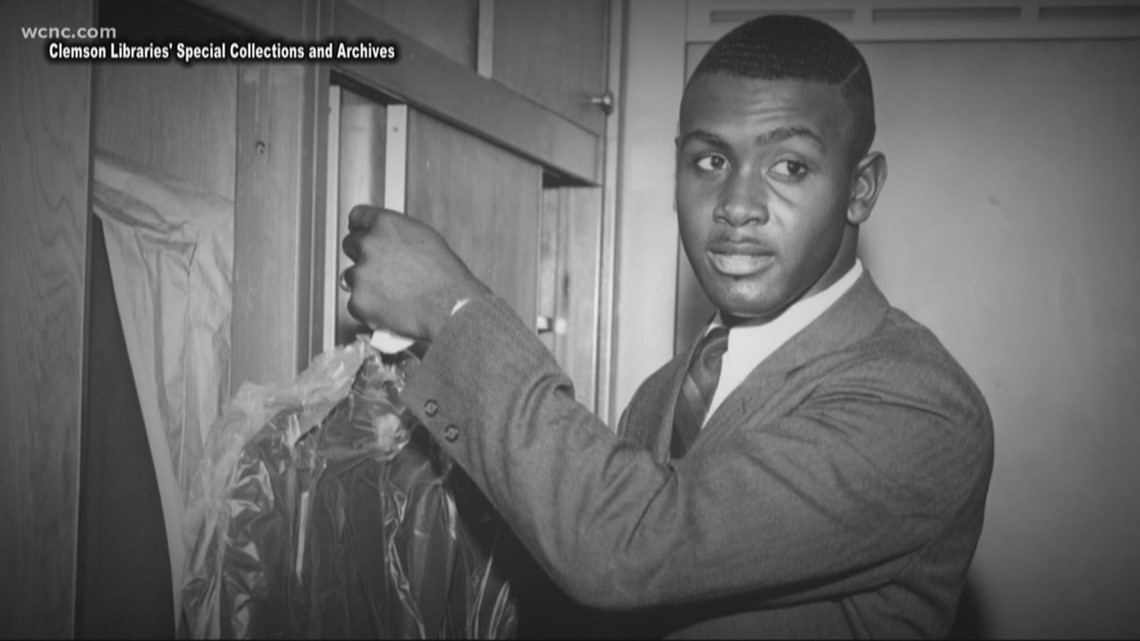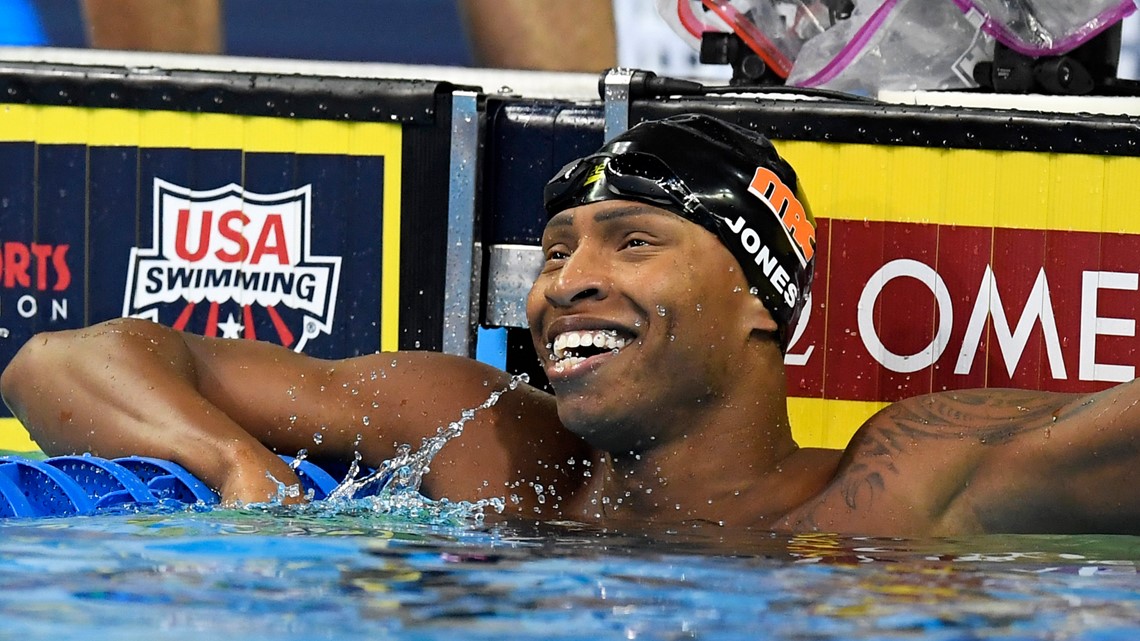CHARLOTTE, N.C. — WCNC Charlotte is celebrating Black History Month by highlighting historical people in Charlotte and the Carolinas to celebrate their achievements and remember their struggles and the obstacles they had to overcome to reach greatness.
While this list can't possibly include all the pioneers in the Black community, WCNC Charlotte wants to highlight some notable trailblazers in the Queen City and the surrounding area's history.
Daniel Sanders - First Black president of Johnson C. Smith University
Daniel J. Sanders was the former president of Biddle University, now known as Johnson C. Smith University. He served as president for 17 years and also published a Presbyterian newspaper for African-Americans.
Sanders was the first African-American president of a four-year college in the southern United States.
Dorothy Counts-Scoggins - Helped integrate Charlotte public schools
In 1957, Dorothy Counts-Scoggins helped to integrate Charlotte-Mecklenburg Schools. The 15-year-old faced a crowd of hecklers as she walked into what was then known as Harding High. That historic encounter resulted in this famous photograph.


After four days of harassment, her parents withdrew her from the school.
Julius Chambers - Ran the first integrated law firm in Charlotte
Charlotte civil rights lawyer Julius Chambers was a towering crusader for equality whose landmark cases led to integrating Charlotte-Mecklenburg public schools.
Over the years, his opponents set his law office on fire, bombed his house, torched his car and burned his father s shop in Mount Gilead. Yet, Chambers was never vindictive, and he never quit.
Harvey Boyd - Created Mecklenburg County's seal
In the late 1950s and early 1960s, the Mecklenburg County Chamber of Commerce held a contest where people could submit their designs for the county's seal. They wanted the seal to reflect the county's history, growth and future.
Harvey Boyd was a Black ad artist who designed the winning Mecklenburg County seal in 1964 at the age of 20. He worked for The Charlotte Observer at the time. The seal is still used to this day.
Harvey B. Gantt - First Black mayor of Charlotte
Harvey Gantt was a political pioneer in Charlotte, serving as the Queen City's first Black mayor from 1983 to 1987. Prior to his election to mayor, Gantt served as a member of city council for nearly a decade. He was the first African-American student admitted to Clemson University. He graduated with honors with a bachelor's degree in architecture.


His architecture firm helped design some of Charlotte's most recognized landmarks, including the transportation center in Uptown.
Charlotte's Harvey B. Gantt Center for African-American Arts & Culture was named in his honor. Gantt's legacy lives on, and now there's a renewed push to rename Stonewall Street, named after Confederate general Stonewall Jackson, after Gantt.
Rodney Monroe - CMPD's first Black police chief
Rodney Monroe made history in Charlotte in 2008 when he became the Charlotte-Mecklenburg Police Department's first Black police chief.
Monroe was appointed after serving as police chief in Macon, Georgia, and Richmond, Virginia.


After serving in the position for seven years, Monroe retired in 2015. Monroe retired having protected and served for nearly 40 years. In his time as CMPD chief, he led the force during a period of steady crime reduction, including the lowest number of homicides on record.
Thaddeus Tate - Prominent Black businessman
Thaddeus Tate was one of Charlotte's most prominent Black businessmen of his era. Tate started out by opening his own barbershop in the late 1800s.


Tate was also a founder of the Mecklenburg Investment Company, which built the first office building in the Queen City for Black businesses. Tate's contributions to the community continued with the Brevard Street Library and a branch of the YMCA for Black people in Charlotte.
Ray Booton - Charlotte's first Black police officer
Ray Booton joined what is now known as the Charlotte-Mecklenburg Police Department in 1946 after serving in World War II. Booton was one of eight Black officers who joined the force and was one of the first Black police officers to ever walk the beat in Charlotte.
Four years after joining the police department, he left and went on to become a minister.
Booton died in 2009 at the age of 89. Booton was the last surviving member of those original eight officers who joined the force.
The Friendship 9 - Rock Hill's sit-in movement
On Jan. 31, 1961, a group of nine students was arrested after staging a sit-in at a segregated lunch counter at McCrory's Five and Dime store on Main Street in Rock Hill. The Friendship 9 refused to bail out of jail -- instead, serving 30 days of hard labor to draw attention to the cause of integration.
The group was the first group of students to ever refuse to pay bail, according to The Friendship 9's website. The organization says the group decided to do this because it was costing $100 or more to bail African American students out of jail after getting arrested for sitting at white-only counters.


The decision to be taken to jail was done both to make a statement and to save civil rights groups money, the organization says.
The group has since been named the Friendship 9, as eight of the nine were students at Friendship Junior College.
J. Charles Jones - Civil rights activist
Civil rights activist J. Charles Jones left a huge mark on Charlotte: He helped organize some of the first lunch-counter sit-ins in Charlotte.
Jones was born in August 1937 in Chester, South Carolina. His family moved to Charlotte 10 years later and settled in the Biddleville neighborhood in the shadows of Johnson C. Smith University, where Jones later became a divinity student.


It was 1960 when Jones heard about North Carolina A&T students protesting segregated restaurants by holding sit-ins. He wanted to bring that to Charlotte and met with students to share his plans: wear his Sunday best, walk into the Woolworths nearby and not leave.
He expected 10 or 12 people would join in his efforts, but over 200 came out.
Cullen Jones - Olympic swimmer
Cullen Jones is a four-time Olympic medalist and the first African-American swimmer to hold a world record. He attended North Carolina State University, where he studied English and swam for the NC State Wolfpack swimming and diving team from 2003 to 2006.


Since earning his first Olympic medal in 2008, Jones has made it his mission to help others learn how to swim, with a focus on bridging the minority swimming gap and diversifying the sport that changed his life.
Thereasea Clark Elder - First Black nurse to integrate Mecklenburg County's public health system
In 1962, Thereasea Clark Elder became the first Black nurse to integrate the public health system in Mecklenburg County.
She got her training in the U.S. Cadet nursing program.
Despite facing many obstacles, Elder's nursing career spanned nearly 50 years before she retired in 1989.
Dr. Reginald Hawkins - Civil rights leader
Dr. Reginald Hawkins was a civil rights leader who played a key role in desegregating Charlotte schools, hospitals and public places.
Hawkins moved to Charlotte to attend Johnson C. Smith University and remained a resident of the Queen City.
In 1968, he became the first African-American since reconstruction to run for governor of North Carolina.
Gene Woods - Atrium Health's president and CEO
Gene Woods, the president and CEO of Atrium Health, leads a team of more than 70,000 teammates serving patients at hospitals and care locations in four states. During his tenure, Atrium has been recognized as one of the best employers for diversity.
Woods has been recognized as one of the 100 most influential people in healthcare.
Vi Lyles - Charlotte's first female Black mayor
Vi Lyles is the first Black female mayor in Charlotte's history. Prior to taking office as mayor in 2017, Lyles served two terms on Charlotte City Council.
Lyles has spent most of her career with the city, working as a budget analyst, budget director and served as the assistant city manager.
Bonus: Queen Charlotte
Though never a resident of Charlotte, North Carolina, the city got its name from Queen Charlotte, who was a German-born princess from Mecklenburg-Strelitz, Germany.
Queen Charlotte, born Sophia Charlotte of Mecklenburg-Strelitz, was born on May 19, 1744, in the small northern German territory ruled by her parents: Duke Charles Louis Frederick of Mecklenburg Princess Elisabeth Albertina of Saze-Hildburghausen, according to the official Royal archives.
Queen Charlotte would go on to marry King George III, the British monarch who lost the Revolution and the colonies.


The 18th-century portrait of Queen Charlotte, by Sir Allan Ramsay, was used as propaganda in the colonies to win over enslaved Blacks to Britain during the Revolutionary War. It now hangs in the Mint Museum, in Charlotte, North Carolina.
Charlotte, North Carolina, located within Mecklenburg County, had long featured a statue of Queen Charlotte statue at Charlotte Douglas International Airport.
Wake Up Charlotte To Go is a daily news and weather podcast you can listen to so you can start your day with the team at Wake Up Charlotte.
SUBSCRIBE: Apple Podcasts || Spotify || Stitcher || TuneIn || Google Podcasts
All of WCNC Charlotte's podcasts are free and available for both streaming and download. You can listen now on Android, iPhone, Amazon, and other internet-connected devices. Join us from North Carolina, South Carolina, or on the go anywhere.

